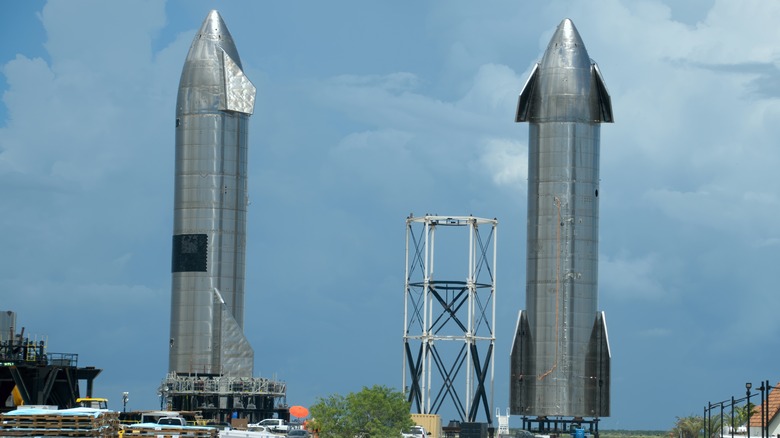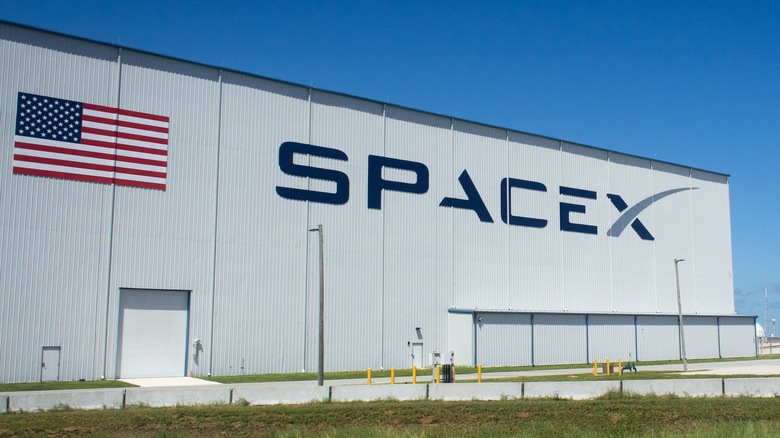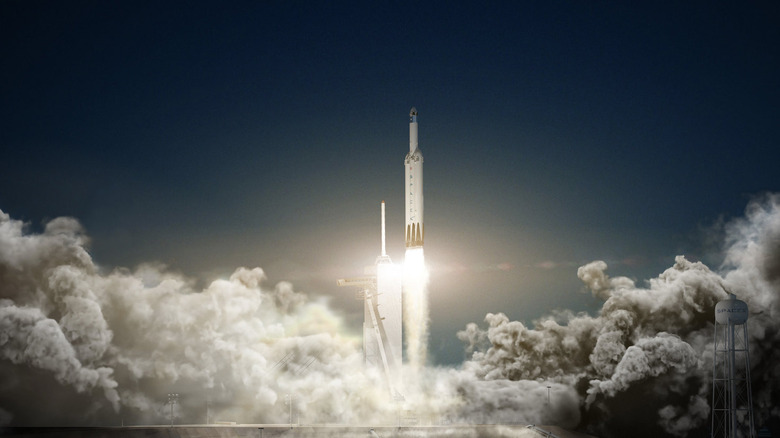The One Failure That Changed SpaceX Forever
On April 9, 2022, the SpaceX Dragon spacecraft docked with the International Space Station in the historic first all-private human spaceflight mission to the ISS (via Reuters). It was another major achievement for the company that's out to revolutionize space, and SpaceX's milestones are as extensive as they are impressive. The company created the first reusable rocket, a disruptive technology that cut costs and launch times dramatically while making space more accessible.
Other company milestones include reducing NASA's dependency on Russia for shuttling astronauts back and forth from the International Space Station, as well as designing and producing the spacecraft dubbed the "Holy Grail of Rocketry", the Starship. SpaceX explains that Starship is a fully reusable transportation system designed to carry both crew and cargo to the moon and, one day, perhaps to Mars. But how did a company that was founded in 2002 reach such epic proportions in only a couple of decades? The road for SpaceX was filled with failures, and the ability to learn from failures and move on was key to its survival.
How the Falcon 1 failures shaped SpaceX
The first three SpaceX launches all crashed and burned, according to the New York Times. In 2017, during the International Astronautical Congress, Elon Musk recalled these failures as emotional break-or-make moments. "Falcon 1 is where it all started...it started out with just a few people who really did not know how to make rockets," Musk said. But the company had a vision. The Falcon 1 was to be a revolutionary rocket because it would be able to provide the world's lowest-cost access to orbit and space (via Space). This vision for low-cost and increased access to space would define SpaceX throughout all its years of operations, even as it pushed deeper into space.
But, just how dangerous were the first failures? The first Falcon 1 failed launches put the company in a near-bankruptcy stage. During his speech at the 2017 event, Musk explained that the fourth launch was critical for the company. After three failed attempts, SpaceX was running out of cash and it had one shot left for success. If the fourth launch had failed, SpaceX would probably not exist today.
There are many things SpaceX learned from the first three catastrophic launches, but the major difference between those three missions and the fourth one was the engine. NASA explains that the first Falcon 1 missions were powered by an in-house SpaceX-built engine called the Merlin 1A. But the fourth mission, launched in 2008, used an upgraded Merlin 1C engine. SpaceX reached orbit with the fourth Falcon 1 mission and remained above water to live another day.
The future of SpaceX
Falcon 9, the successor of Falcon 1, also uses Merlin engines. Due to its massive size and payload capacity, it is retrofitted with 10 Merlin engines, one of which is used to power the second stage. As noted by ArsTechnica, the Falcon 9 may be the safest rocket in the world, boasting an extensive history of more than 100 successful consecutive launches.
SpaceX is now focused on several operations, including the expansion of Starlink, a satellite-based internet service that aims to end the digital divide on Earth, as well as the launch of government and commercial satellites and its various crew and cargo missions to the ISS. But the main focus of the company has always been to make humans a multi-planetary species by one day shuttling humans to Mars for a long-term presence on the red planet.
NASA adds that the Starship will also play a critical role in the Artemis lunar effort. SpaceX will adapt a Starship to travel to the moon and land astronauts on the lunar surface. The mission, slated for 2025, will mark the historical return of humanity to the moon 50 years after Apollo's final mission.


